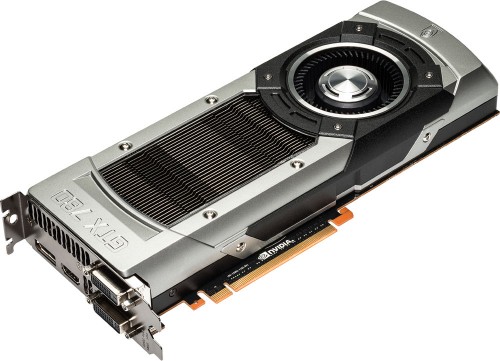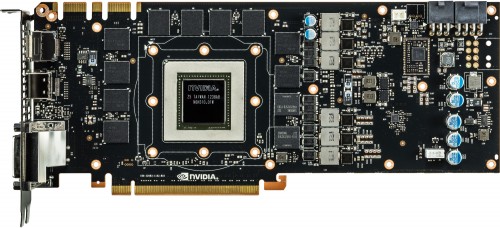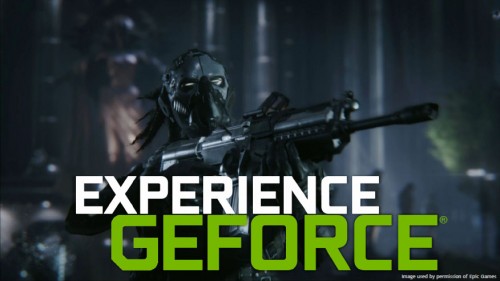- Qualcomm Launches Snapdragon 4 Gen 2 Mobile Platform
- AMD Launches Ryzen PRO 7000 Series Mobile & Desktop Platform
- Intel Launches Sleek Single-Slot Arc Pro A60 Workstation Graphics Card
- NVIDIA Announces Latest Ada Lovelace Additions: GeForce RTX 4060 Ti & RTX 4060
- Maxon Redshift With AMD Radeon GPU Rendering Support Now Available
The Almost Titan: NVIDIA GeForce GTX 780 Review

When Titan released in February, it seemed likely that NVIDIA’s GeForce 700 series would be held off on for some time. Well, with today’s launch of the company’s mini-Titan – ahem, GTX 780, we’ve been proven wrong. Compared to the GTX 680, it offers a lot of +50%’s – but is it worth its $649 price tag?
Page 9 – Final Thoughts
When NVIDIA released its GeForce Titan back in February, I admit that I figured it was a sign that we wouldn’t see the GeForce 700 series for quite a while. Well, I was wrong, and I’m glad I was. The GTX 780 is based on the same GK110 architecture as Titan, so by buying one of these GPUs, you’re effectively buying a $649 Titan (versus a $1,000 one).
This is where things become a little confusing. Titan and GTX 780 are both based on the exact same GK110 architecture, with Titan bundling in 17% more cores and 50% more memory. Are those benefits worth $350? It’s hard to say, and it’s also hard to say whether or not Titan will remain superior for non-gaming scenarios. It’s based on supercomputer intentions, after all, whereas GTX 780 targets gamers, plain and simple. Unfortunately, we don’t have a Titan here, so that sort of comparison testing will have to wait.
At the current time, 3GB graphics cards should be the norm, at least where high-end setups are concerned. I haven’t personally found games that would exceed 2GB (though I haven’t specifically tested for this at depth), but I have noticed some come close. I do see these memory requirements increasing in the future, especially for those with multi-monitor setups. For single-monitor (>1080p), I have a feeling that 3GB will be suitable for quite a while. Also, on the GPGPU front, if you can specifically exploit Titan’s larger framebuffer, that’s something to consider.
Let’s talk about another comparison, this time against the GTX 680. In the intro, I mentioned that NVIDIA pits the 780 to be 33% faster than the 680; in our 3DMark Fire Strike test, we hit 29%. For games, the average increase we saw hovered around 15~25%, with Metro 2033 being an insane exception to showcase a 55% boost.
Had we adopted the use of more games NVIDIA itself tested with, we could have seen the average become closer to its reported 33%. Here are a couple of examples of games the company tested and its performance increase over the HD 7970 GHz (we can’t validate these, of course): Crysis 3 (+20%), Far Cry 3 (+33%), Batman: Arkham City (+29%), Assassin’s Creed 3 (+32%) and Max Payne 3.
Once our GPU testbench is updated, I plan to revisit this card and compare it to the HD 7970 GHz (and other cards) once again, but with some additional games – the requirement being that they are still relevant. AMD also has a couple of games that it’d like us to test with, but we haven’t been able to up to this point (Tomb Raider, Hitman: Absolution, namely).
With its GeForce GTX 780, NVIDIA can again claim that it has the world’s fastest single-GPU solution for under $1,000. At its price-point of $649, the GTX 780 doesn’t compete with anything directly. AMD’s Radeon HD 7970 GHz Edition can be had fairly easily for $450, while the GTX 680 sits closer to $500. For its $200 premium, is NVIDIA’s GTX 780 worth it?
That depends on your value perception. The GTX 780 didn’t often blow away the HD 7970 GHz as I’m sure NVIDIA had hoped, although again, we didn’t test with a couple of notable games I would have liked (where NVIDIA’s testing did see bigger gains). NVIDIA also has a couple of perks that some might like, such as PhysX and CUDA.
Here’s something else to consider. The main reason AMD’s HD 7970 GHz was able to keep up to NVIDIA’s GTX 780 so well owes its thanks to the progression of the Catalyst driver. When I benchmarked AMD’s card last September, it scored 2575 in the GPU test in 3DMark 11 (Extreme). With this week’s testing, that number became 2,999 – a 16.5% increase. That’s stark. I use 3DMark as an example, but comparing games, increases of 7~15% were also seen.
For all of the 1080p results in this review, aside from those from the three special games, I included GTX 680 results using both the 306 and 320 drivers. At first, I did this just for fun, to show how well drivers can improve performance over time. But after seeing the staggering increases of the HD 7970 GHz, I realized it was important to include. If you go back and look at some of those results, you’ll be able to see a trend – driver releases continue to increase performance for a given GPU well past its launch. Today’s GTX 780 performance isn’t going to be next year’s GTX 780 performance, whereas the HD 7970 GHz has likely almost reached its peak (that family of cards has been available for 16 months, after all).
Still, is that worth $200 over the HD 7970 GHz? That’s for you to decide.
As it is, NVIDIA offers a very attractive offering with its GeForce GTX 780. While it’s carrying a $150 launch premium over last year’s GTX 680, it offers great performance, runs super-quiet even at full load, and has other niceties such as GPU Boost 2.0 with much improved variables for overclocking. It’s also the best-looking card (again, to me) ever produced, if that counts for anything.
Support our efforts! With ad revenue at an all-time low for written websites, we're relying more than ever on reader support to help us continue putting so much effort into this type of content. You can support us by becoming a Patron, or by using our Amazon shopping affiliate links listed through our articles. Thanks for your support!








